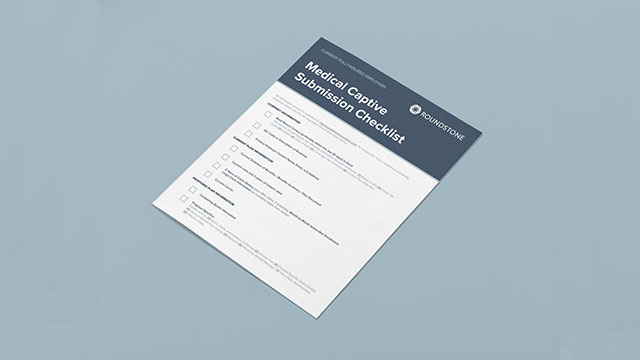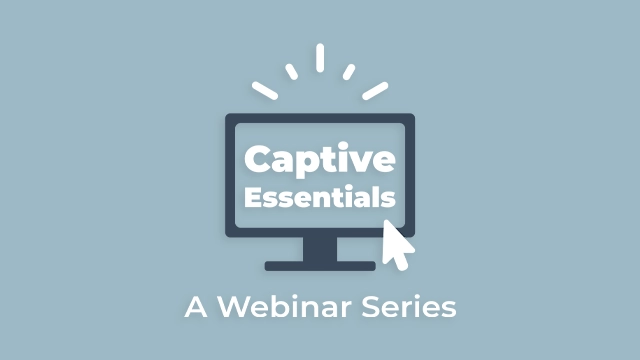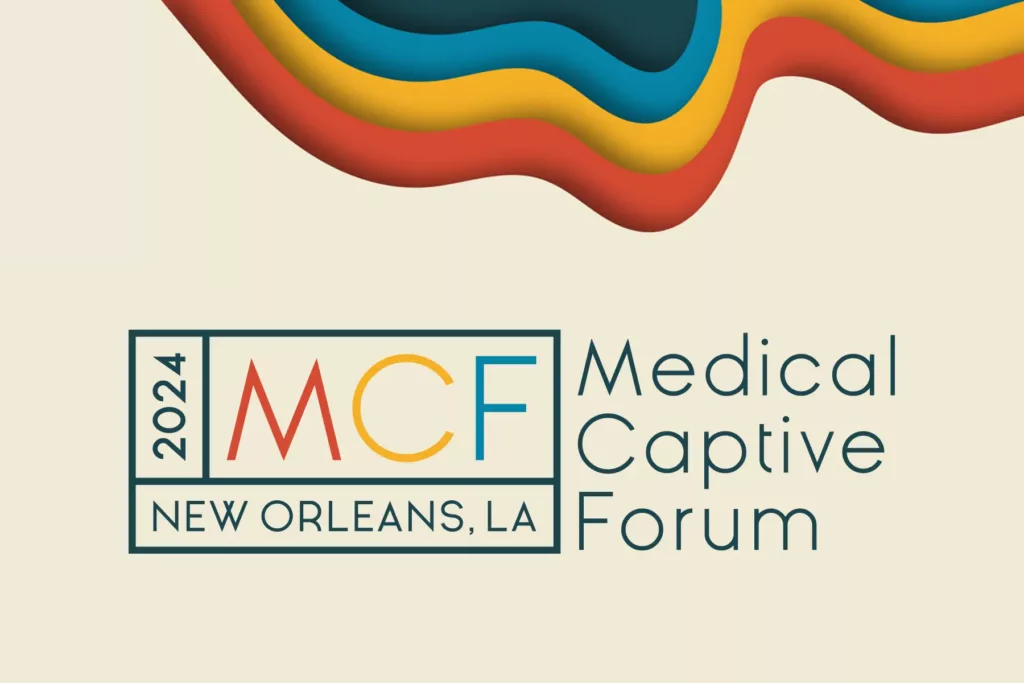- Employers
- Advisors
ADVISORS
Roundstone recognizes and appreciates the important role benefits advisors play — that’s why we only operate through our network of trusted advisors.
- Resources
RESOURCES
Explore helpful resources, including events, webinars, case studies, fact sheets, press releases, and more. - Blog
BLOG
Stay up-to-date with the latest trends and learn about how small to midsize businesses can enjoy the benefits of self funded health insurance.
LATEST POST
FEATURED FAVORITES
- About Us
ABOUT US
We are a health benefits captive providing self-funded solutions to small and mid-sized employers. Our self-funded medical group captive bands employers together to fund their benefits the way much larger Fortune 500 companies do.
MEDICAL CAPTIVE FAQS
Everything you want to know about the Roundstone Group Medical Captive.
General Questions
A captive insurance company is an insurance company that provides insurance to its owners.
A group captive is an insurance facility for unrelated participants who join together to share risk. Each participant has a desire to better control and manage their risk. Participants typically deploy effective risk management programs.
Captives are a long-term, proven insurance funding strategy.
– In 2012, there were more than 5,000 captives world-wide.
– Almost half of the 1,500 largest companies in the world own a captive.
– Since 1980, the number of captives has grown 600%.
– More than 40% of major U.S. corporations have one or more captives in place.
– The alternative risk transfer market makes up more than 30% of the commercial risk market.
In the standard market, all risk is assumed by and all profits are retained by the insurance carrier. A captive program allows the captive participant to share in the risk for a potential reward of underwriting profits and investment income.
The Roundstone Medical Captive is a group captive program that offers Medical Stop Loss coverage to middle market employers. An A.M. Best “A+” rated, class XV carrier issues the stop loss policies and Roundstone Management, Ltd. is the underwriter.
No, the medical captive program includes the issuance of a policy from a licensed and regulated A.M. Best “A+” rated, class XV insurance company.
No, each employer group receives its own stop loss policy. The employers do not pool funds together for the direct payment of benefits.
The program uses a domestic A.M. Best “A+” rated, class XV carrier that is an admitted carrier regulated by the Department of Insurance in the state where the policy is issued.
Participants share in the outcome of the group captive’s underwriting performance, including the underwriting profit and investment income.
The insured participates in the captive on a pro rata basis with its premium and collateral. The carrier cedes (transfers) risk via a reinsurance agreement from the policy issuing carrier to the captive. The insured has an agreement with the captive (“Participation Agreement”) that sets forth the insured’s beneficial interest in the captive’s underwriting performance.
Roundstone is an independent insurance organization focused on developing captive and alternative risk products and solutions. Roundstone manages the captive facility for the insured participants.
Risk Questions
The captive reinsures the risk between the participants’ deductibles and $500,000 (other retention may be available). Claims above the deductibles, but less than $500,000, are ceded to and paid by the captive’s loss fund. Losses within this layer in excess of the captive’s loss fund are funded by the reinsurer.
The maximum exposure to loss for the participant is their contributed collateral. This is not an assessable program.
The opportunity to capture the profits your fully-insured carrier has been enjoying.
The captive retention of risk is limited by reinsurance agreements that limit any catastrophic or aggregation of risks. The program’s reinsurance structure limits the participant’s maximum loss and means the participant will never be required to fund more than its premium and collateral. The carrier assumes the program risks above the aggregate and specific occurrence attachment points.
– Individual claims over $500,000.
– Aggregate coverage for the group attaching at 125% of expected losses.
Pricing & Expenses Questions
Our experienced underwriters determine pricing utilizing a proprietary methodology. Expected claims are projected to ensure appropriate funding for the captive.
– Stop Loss Premium.
– Collateral Investment (typically less than 10% of your Stop Loss Premium or 2% of fully insured premium).
– Underwriting and Captive Management Fees are predetermined and included in your Stop Loss Premium.
– Collateral and Captive underwriting return offset premium and collateral contributions at the conclusion of the underwriting year.
Collateral Questions
Collateral is the contribution the participant makes in the captive to cover liabilities exceeding collected premium. Collateral earns investment income and may remain intact and possibly refundable depending on underwriting results.
Collateral is required to fund the captive’s assumed risk above the premium, net of expenses (the “Captive Risk Premium”). This ensures all potential losses are funded upfront and participants are not required to contribute more money.
Your collateral secures your participation in the captive, which offers the opportunity to participate in the underwriting profit of the captive and realize investment income on both your collateral and Captive Risk Premium.
Collateral is paid by ACH or check upon binding.
Accounting & Reporting Questions
Each captive participant will receive quarterly experience statements reflecting all activity of their captive participation, including the collateral contribution and investment return.
All activity is reported quarterly and final results for each underwriting year are available within six months of the conclusion of that underwriting year.
You will receive an individual experience statement on a quarterly basis for each underwriting year that you are a participant. The experience statements also show the activity of the entire captive.
Assets held by the captive are managed consistent with insurance industry regulations and conventions, predominately in conservative fixed income assets.
A bank located in the United States and approved by the National Association of Insurance Commissioners (NAIC) is the custodian of these funds and they are held in an account specific to each captive.
The carrier and Roundstone do not advise on any business income tax requirements or issues. Use of any information from this or any other communication referred to is for general information only and does not represent tax advice either express or implied. You are encouraged to seek professional tax advice for income tax questions and assistance.
Each participant receives a 1099 from Roundstone when a distribution (underwriting profits and investment income) is made. Quarterly, you will receive a financial statement reflecting a snapshot of your performance; this is not a tax document. The following addresses common accounting approaches for captive participants:
– Collateral: Record at cost. Deduct the initial investment (capital contribution) on the balance sheet from cash. Then show the outlay as a deposit on the balance sheet.
– Underwriting Profit and Investment Income: Do not have to split these apart when received or record until there is a distribution. Once distributed, record as miscellaneous income on your income statement and increase to cash on your balance sheet.
You do not have to record anything until there is a distribution. Once the distribution is made, you can record as miscellaneous income on your income statement and increase cash on balance sheet.
Documentation Questions
A standard stop loss insurance submission and execution of the Captive Participation Agreement are both required in order to join the captive program.
The Participation Agreement defines the participant’s beneficial interest in the captive by governing the risk sharing, risk distribution, termination, representations, and warranties of the participant in the captive.
Domicile Question
– Bermuda offers regulatory benefits which create better reinsurance opportunities and efficiency in program management.
– Bermuda’s segregated account law allows different captive groups within Roundstone to segregate assets and liabilities from each other, thus protecting the assets of your captive from other captives Roundstone administers.
– Roundstone Insurance Ltd. is a Class III Bermuda reinsurance facility and a registered United States taxpayer.
– Insurance policies are issued by a U.S. domiciled and state regulated insurance carrier.
Underwriting Questions
– Completed Application
– Current Census
– Copy of Current Plan/Policy
– Proposed benefit design
– Three (3) Years Stop Loss Premium and Claims History
– Identity of the current and/or proposed TPA and network
– Rate or premium history for 3-5 years
Roundstone estimates or prices expected claim costs for each employer much like a standard self-insured stop loss submission. In estimating these expected claim costs, Roundstone applies insurance industry underwriting guidelines. Best in class applicants from a historical loss performance, financial strength, and wellness management perspective are ideal candidates for a group captive.
Each account is underwritten using claims history with the premium and experience of each employer. Captive participants with higher losses and higher risk profile pay more premium. Not all applicants are a good fit and those are declined by our underwriters.
Your outstanding loss experience should be recognized and rewarded. You have the lowest loss ratios and continue to pay premium without any return of unspent money (underwriting profit or investment income) from your lower utilization of your premium funding. The group captive offers you the opportunity to lower your ultimate insurance cost by retaining these excess premium funds.
You already share risk with industry performers who do not attain your same positive outcome. Your premium is set annually by the carrier based on how the carrier’s group performed or possibly insurance industry or financial market performance. Since you are already sharing risk with others, the difference in our program are 1) clearly delineated expenses, 2) rules for distribution of shared profit and losses, 3) ability to influence group behavior through periodic meetings with access to detailed loss information, and 4) quarterly reports of group performance with your individual financial information outlined in comparison to the group.
As captive managers and underwriters, we do not allow every employer into the captive program. We select participants based on underwriting criteria including historical loss performance, financial strength, and loss control procedures. You are part of a “Best in Class” group that is designed to return underwriting profit and deliver the lowest overall insurance cost.
The group captive provides the same policy form coverage as the standard market and offers the following benefits:
(1) Potential sharing of underwriting profits and investment income.
(2) Reduction of insurance cost.
(3) Stabilization of unpredictable and cyclical insurance market.
(4) Control over your healthcare spend.
(5) Partnership with carrier and participants who share a loss prevention.
Glossary
Stop Loss Coverage that limits the amount the Employer pays on specific claims below the specific deductible. The Aggregate Excess Loss Coverage begins when the Employer’s claims under the specific deductible exceed the Aggregate Attachment Point.
The dollar amount at which Aggregate Stop Loss Coverage begins. The Employer’s Aggregate Attachment Point is the maximum amount the Employer will pay on all specific claims below the Specific Deductible.
The point at which the reinsurer’s aggregate coverage of the captive begins. The Captive Aggregate Attachment Point is equal to the captive premium plus the Collateral/Reserves of all Employers participating in the captive.
The Employer’s contribution to the captive’s asset pool, as security to ensure that sufficient assets are available to satisfy captive liabilities. Collateral/Reserves that are not needed to pay claims in the captive’s layer of risk are returned to the participants after the close of the underwriting year or credited to the next year.
An insurance facility for unrelated participants who join together to share risk. Each participant has a desire to better control and manage their risk. Participants typically deploy effective risk management programs.
A PBM administers prescription drug benefits. They work with prescription drug manufacturers, pharmacies, and drug wholesalers to help the Employer and employees access prescribed medication per their contract price. Their objective is to help members achieve the best possible outcomes, and the right PBM partner will also reduce pharmacy spend. More on PBMs can be found here.
Per enrolled employee per month.
Per enrolled employee per year.
A healthcare cost containment model that limits what a group health plan will pay for certain high-cost services (including hospital and outpatient facility charges), using Medicare reimbursement levels as a pricing model.
A group captive program that offers Medical Stop Loss coverage to middle market employers. An A.M. Best “A+” rated, class XV carrier issues the stop loss policies and Roundstone Management, Ltd. is the underwriter.
The amount the Employer pays on a specific (individual) claim before Specific Stop Loss Coverage begins.
Stop Loss Coverage that limits the amount the Employer pays on a specific claim. The Specific Stop Loss Coverage begins at the Employer’s Specific Deductible.
The practice of medicine using technology to deliver care at a distance. A physician in one location uses a telecommunications infrastructure (telephone, mobile app, website, video call) to deliver care to a patient at a different location. More on telemedicine can be found here.
A firm that handles certain administrative responsibilities for the plan on a fee-for-service basis, as contracted by the Employer. These responsibilities generally include drafting plan documents, processing and paying medical service provider invoices, and submitting stop loss claims.
Roundstone Insurance © 2024






